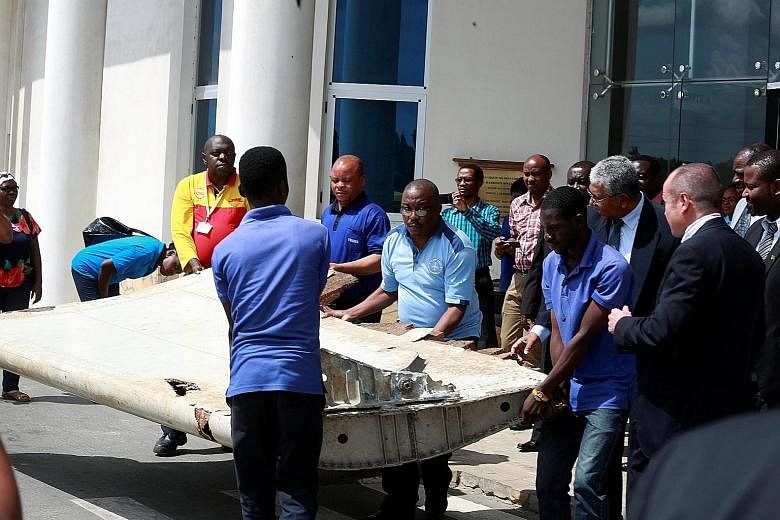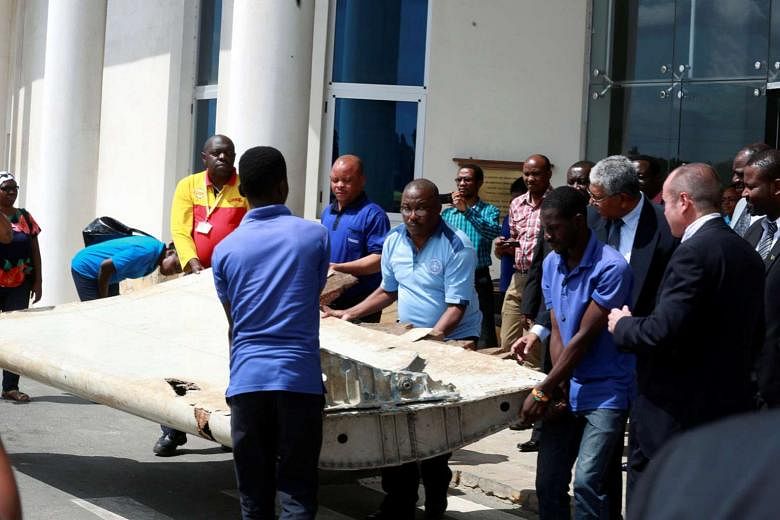A new report on missing Flight MH370 found that the plane appeared to be out of control when it descended rather than being deliberately glided by a pilot.
The Australian Transport Safety Bureau (ATSB) report, released yesterday, said debris from the right wing of the Malaysia Airlines Boeing 777 showed that the pilot did not appear to have prepared the wing flap for landing. Instead, investigators concluded that the wing flap was likely to have been in a retracted, or cruising, position.
The bureau found the plane was likely to have been "in a high and increasing rate of descent" when it ended its mysterious flight. The finding, based on the final series of satellite handshakes between the plane and ground stations, supports the working assumption that the plane was not piloted and crashed after running out of fuel.
The aircraft vanished on March 8, 2014 on a routine flight from Kuala Lumpur to Beijing. The plane was carrying 239 passengers and crew.
Despite several bits of debris emerging off the coast of southern Africa, an exhaustive underwater search in the southern Indian Ocean found no trace of the plane.
The director of the search, Mr Peter Foley from ATSB, said the new findings about the flight's final moments suggest that the underwater search is being conducted in the right place. This is because a controlled descent would have prolonged the distance covered by the plane and led searchers to consider an area farther south.
"What we've concluded from the analysis of that section of right main flap is that it was probably in a non-extended position which means that the aircraft wasn't configured for a landing or a ditching," Mr Foley told reporters yesterday.
"You can draw your own conclusions as to whether that means someone was in control."
The 28-page report was released as international aviation experts began a three-day meeting in Canberra to reconsider all available flight data to determine whether the search should be redefined.
The meeting convened by the ATSB included Australian defence and government scientists and experts from aviation and communications firms Boeing, Thales, Inmarsat, as well as from the US National Transportation Safety Board and Britain's Air Accident Investigation Branch. An ATSB spokesman said representatives from Malaysia and China were also attending.
"The review will inform coverage and results of the search undertaken to date, inform the remainder of the search effort, and develop guidance for any future search operations," the spokesman told The Straits Times.
Asked whether the search could be extended, the spokesman said: "We cannot consider any possible outcomes until the experts have completed their work."
The underwater search off the west coast of Australia has so far completed more than 90 per cent of a targeted 120,000 sq km zone.
The search authority said in an update yesterday that poor weather had hampered the operation, which is not likely to be completed until January or February.
Officials from Australia, Malaysia and China agreed in July that the search would end when the current zone was completed unless there was "credible" new information.
Asked whether he would like the search to be extended, Mr Foley said: "I don't think anyone who's been involved in this search wants to walk away without finding that aircraft. That's just human nature."


